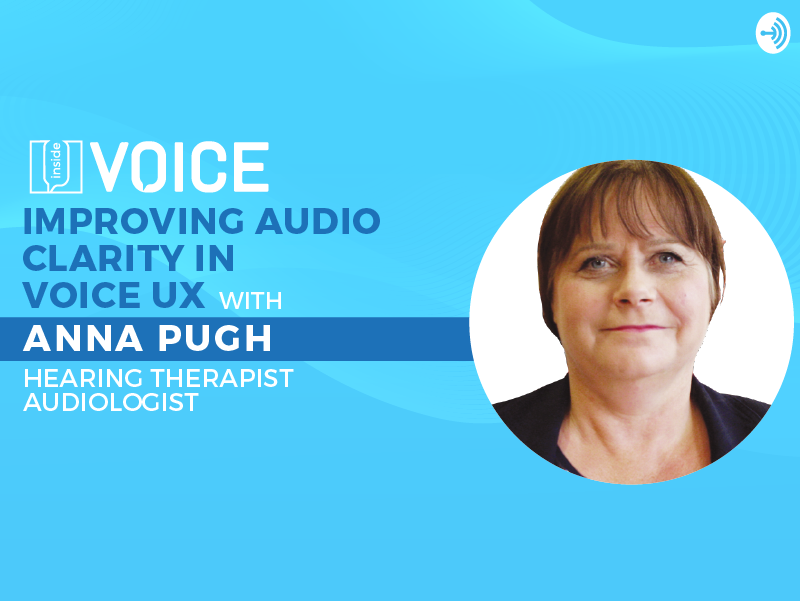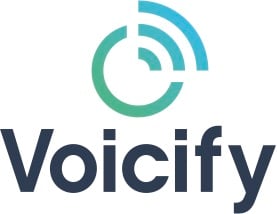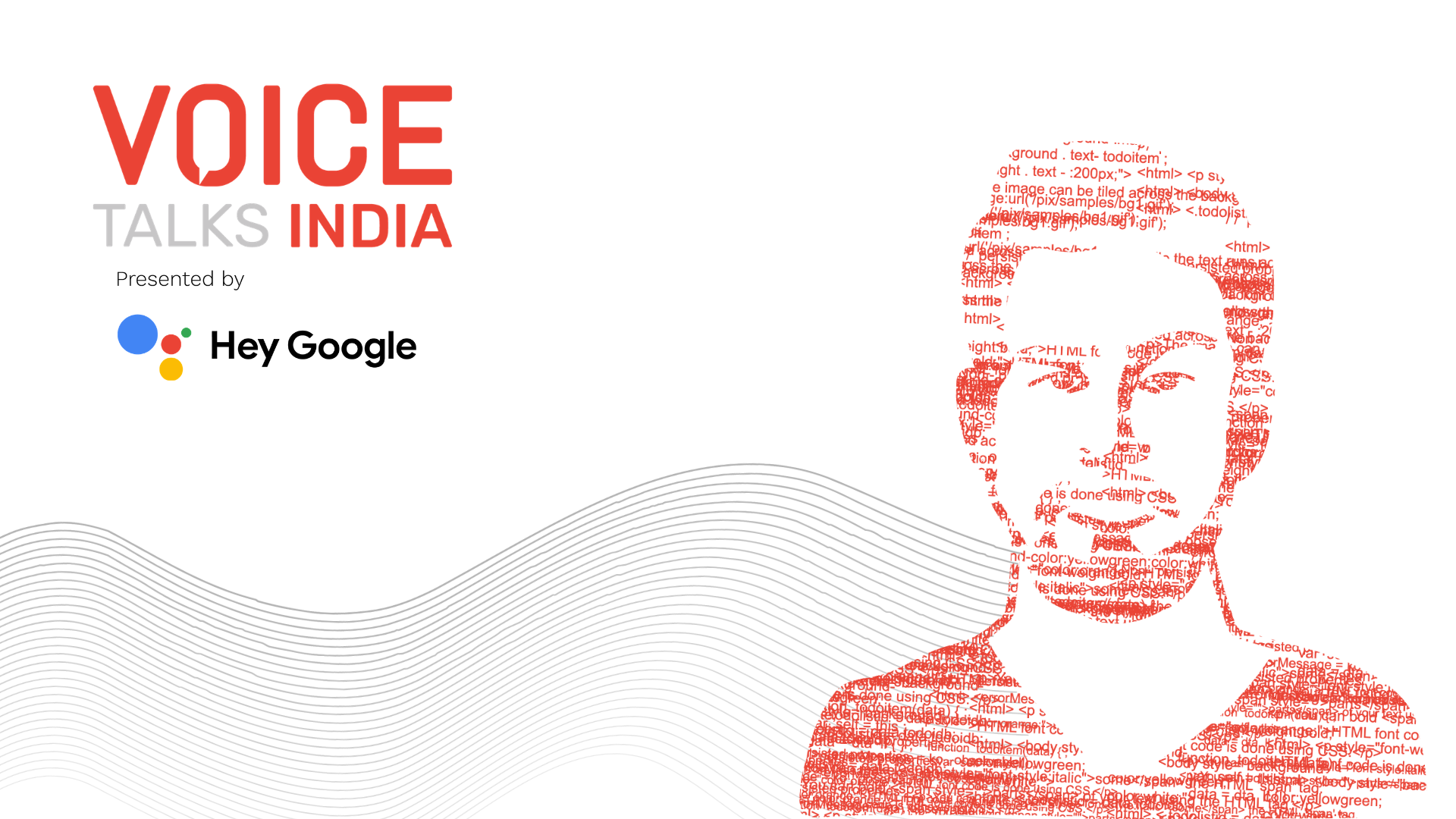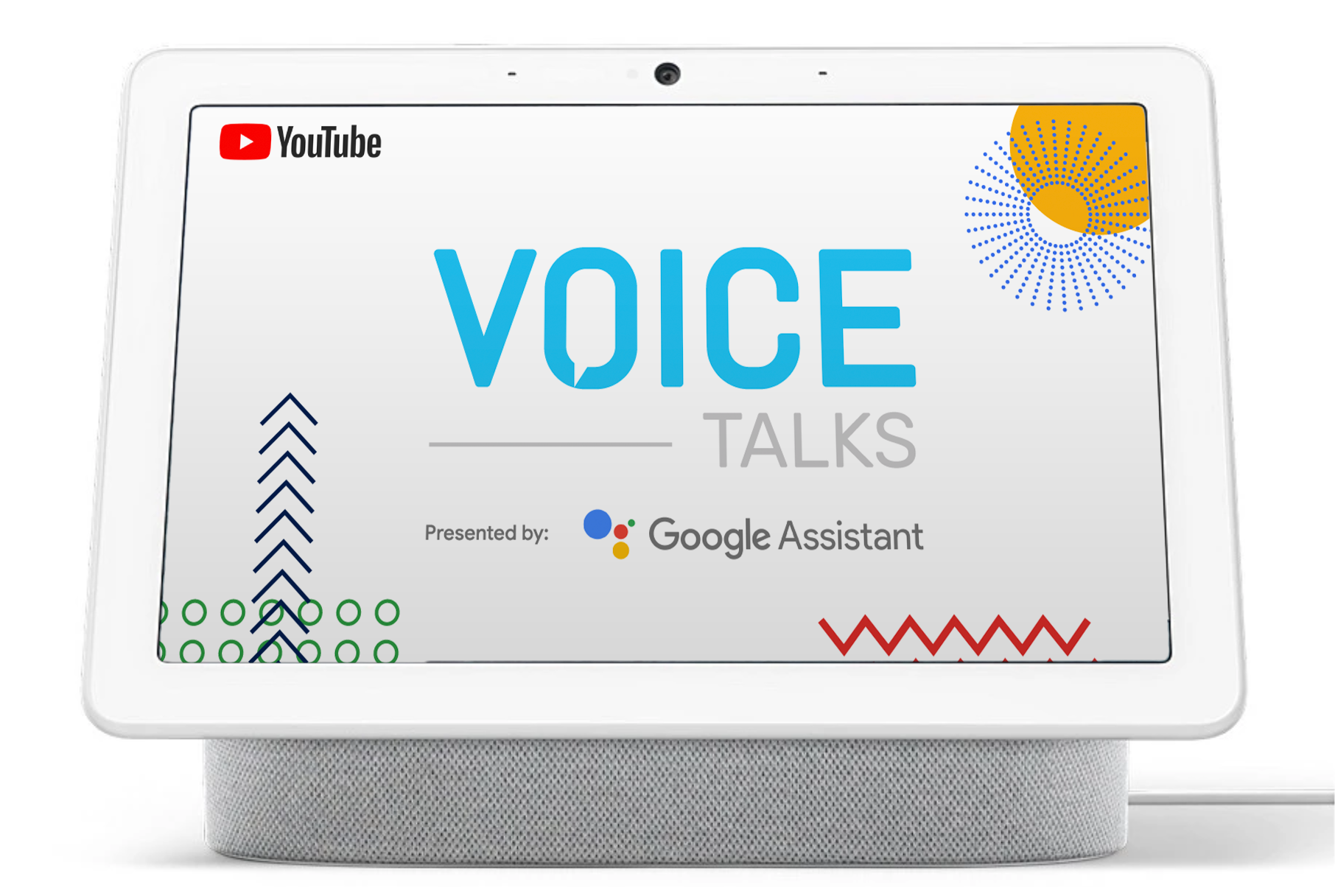




.png?width=800&name=Image%20from%20iOS%20(3).png)
Since many of you prefer your information in writing, we've decided to convert some of our favorite episodes of our Inside VOICE podcast into bite-sized blog posts so you can scroll and skim at your own pace.
In Episode 57, our very own Keri Roberts had quite the chat with Hearing Therapist Audiologist, Anna Pugh, on improving the audio user experience in Voice. Anna, a council member of the British Society of Hearing Aid Audiologists (BSHAA) and author, delved into the details of hearing loss, what it means for voice technology, and how conversational designers can ensure a clear and helpful audio experience for all their users.
Fun fact: your hearing begins to deteriorate after 47 years of age.
The first things to fuzz out are higher frequencies, particularly fricative consonants, which are pronounced by forcing air through a gap in your teeth and/or lips (e.g. letters f, s, v, z). These are the sounds that define how clearly we hear someone speak. This also means that clarity of speech isn't just about volume, it's about hearing every sibilant in a word.
According to Anna, the problem is more common among populations with scarce healthcare, but in general, one in seven people have worsening hearing. That's a large group for technologists to be ignoring.
"It's a huge issue that's not necessarily recognized, but needs to be recognized within the voice community."
She goes on to say that voice-first devices are particularly important for older generations to live with some normality, but to make these technologies accessible to people with hearing impairments, conversational designers need to pay close attention to clarity.
Now that we know where the main problem lies, here's what Anna recommends for conversational designers to ensure their voice technology accommodates those with worsening hearing.
When Anna fits a new patient with hearing aids, she likes to test them out with a sentence that emphasizes those hard-to-hear fricatives.
"I'd say something like sizzling sausages for supper on Saturday, and to see how well they're hearing those sounds," she explains. But, if the patient doesn't hear the word "sausages," there's really no use in her repeating that same word over and over. "You need to stop and think about a similar word and say it a different way, possibly by emphasizing the higher frequencies."
These training techniques should also apply when designing voice technology for those with hearing loss.
We're well aware that the standard voice is female, but not for long. Google Assistant already offers a fun selection of male and female voices, and new voice assistants are popping up with a genderless voice. Alexa, while still stuck on female mode, is gearing up to channel celebrity voices soon.
For Anna, the reason behind providing different voices is that—for people with hearing loss—the fundamental frequency of women's voices are harder to hear. She explains that offering a voice with a lower pitch would help a wider range of users hear their assistants more clearly.
After the release of Alexa wearables, the interest in having your voice assistant on-the-go has soared. We already have wearables for the elderly that measure blood pressure and can even alert caregivers if their user takes a fall. Anna thinks these flashy capabilities should be combined with hearing aids.
"If we think of hearing aids as just ear-worn technology, it can have endless applications," she says. Fortunately, Anna isn't alone in thinking hearing aids could do so much for their users than just enhance their hearing. A flurry of companies are already adding voice assistant capabilities to their hearing aids, giving wearers the ability to ask for information, instantly translate what they're hearing, and even track their health.
Anna, a self-confessed nerd for futuristic hearing aids, thinks Voice will not only help hearing aid wearers get much more from their devices, but also reduce the social stigma of wearing them.
"I've been doing this for 35 years and I I don't think I've ever been as excited about the opportunities for technology."
That's your summary of the episode with the wonderful Anna Pugh, but while you've already gotten the gist of her interview, there's really nothing like hearing the excitement in her voice and the thoughts behind her words. If you have a 20-minute drive home or a boring lunch break, you can listen to Anna Pugh's entire interview here.
If you feel like you've gotten what you needed but have questions for Anna, you can connect with her on LinkedIn, and she'll gladly chat with you.
Lastly, if there's a specific podcast from Inside VOICE that you'd like to have in writing for quick scanning and note-taking, let us know in the comments.






VOICE Copyright © 2018-2022 | All rights reserved: ModevNetwork LLC
